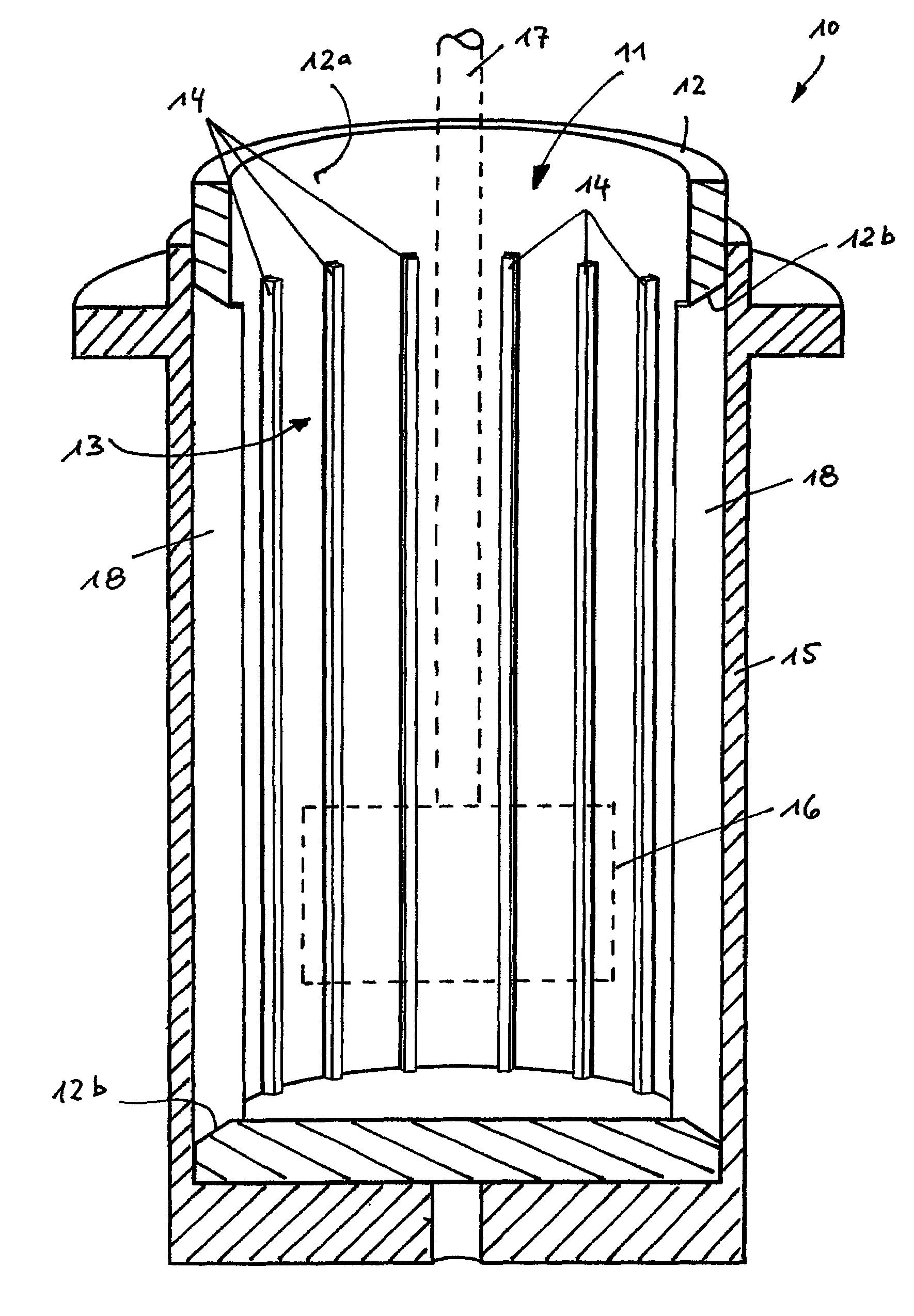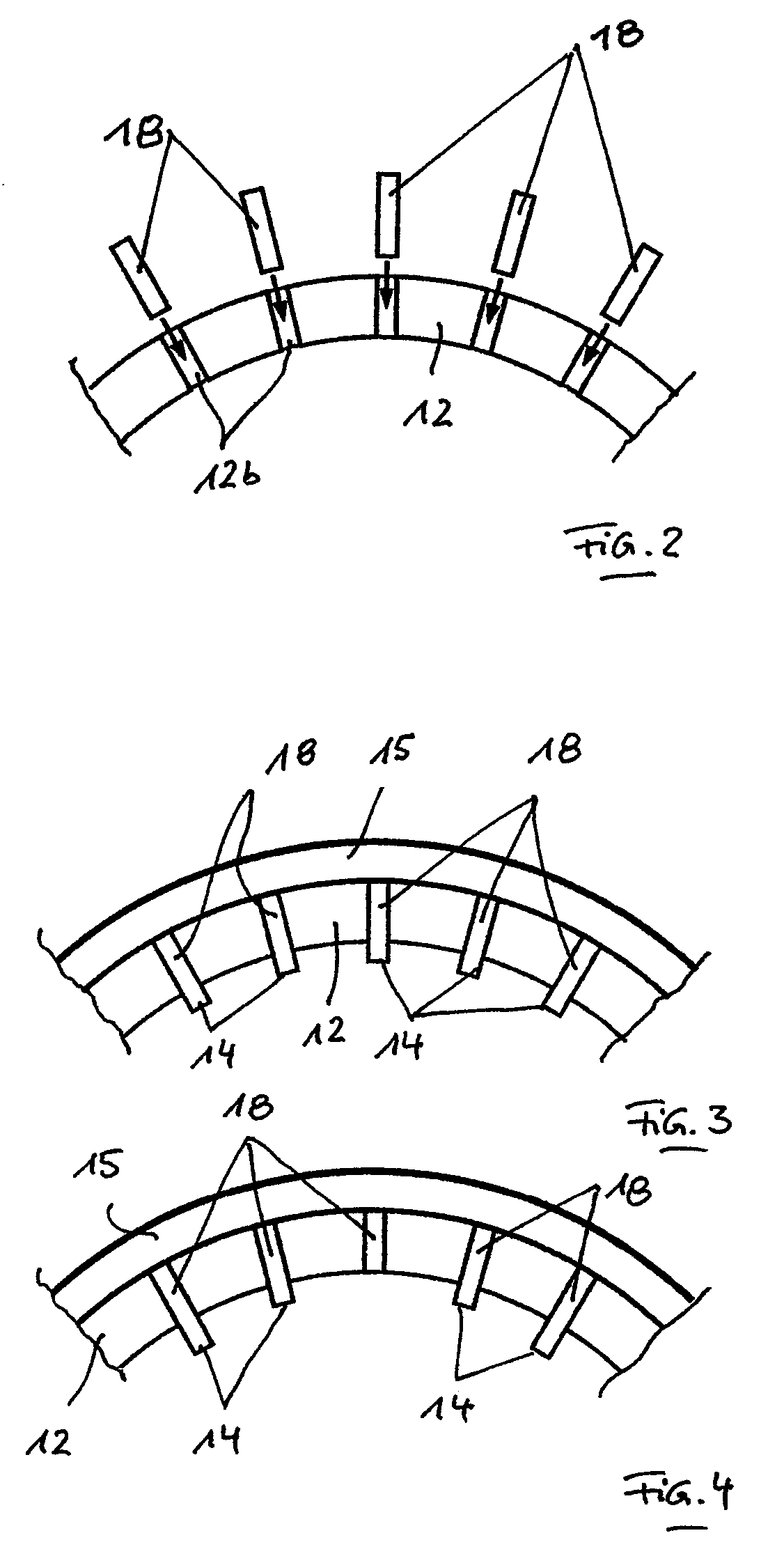Rheometer
a rheometer and rheological technology, applied in the field of rheometers, can solve the problems of affecting the measurement accuracy, so as to prevent the formation of a sliding layer and prevent excessive demixing phenomena in the material
- Summary
- Abstract
- Description
- Claims
- Application Information
AI Technical Summary
Benefits of technology
Problems solved by technology
Method used
Image
Examples
Embodiment Construction
[0022]FIG. 1 shows a section of the construction of a rheometer 10 comprising a cup-shaped container 12 which is open to the top and has a circular cross-section in the embodiment shown. A material sample to be investigated (not shown) can be filled into the inner space 11 of the container 12.
[0023]A vertical rotary driven measuring shaft 17 (shown as dashed lines) extends to the inner space 11 of the container 12 and has a rotor 16 at its lower end, which may have any shape or a shape which is adjusted to the material to be investigated.
[0024]A profile 13 is provided on the inner wall 12a of the container 12, which is formed by a plurality of strip-shaped ribs 14 which are distributed about the inner periphery of the container 12. Each rib 14 extends from the vicinity of the bottom of the container 12 to its upper area and extends substantially parallel to the measuring shaft 17 and thereby substantially vertically.
[0025]Each rib 14 is part of a lamella 18 that is exchangeably held...
PUM
| Property | Measurement | Unit |
|---|---|---|
| depth | aaaaa | aaaaa |
| height | aaaaa | aaaaa |
| lengths | aaaaa | aaaaa |
Abstract
Description
Claims
Application Information
 Login to View More
Login to View More - R&D
- Intellectual Property
- Life Sciences
- Materials
- Tech Scout
- Unparalleled Data Quality
- Higher Quality Content
- 60% Fewer Hallucinations
Browse by: Latest US Patents, China's latest patents, Technical Efficacy Thesaurus, Application Domain, Technology Topic, Popular Technical Reports.
© 2025 PatSnap. All rights reserved.Legal|Privacy policy|Modern Slavery Act Transparency Statement|Sitemap|About US| Contact US: help@patsnap.com



